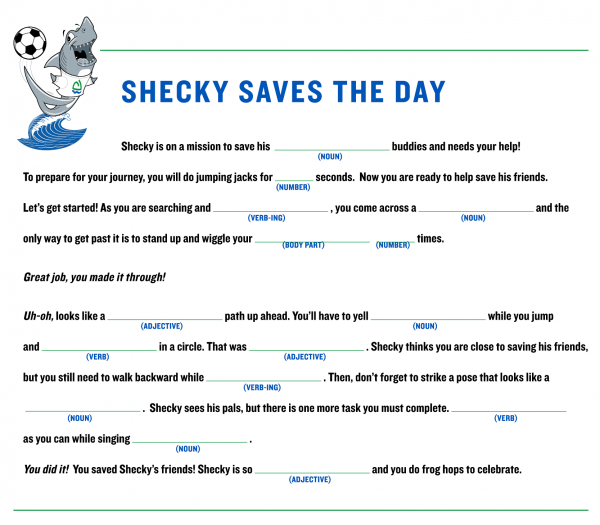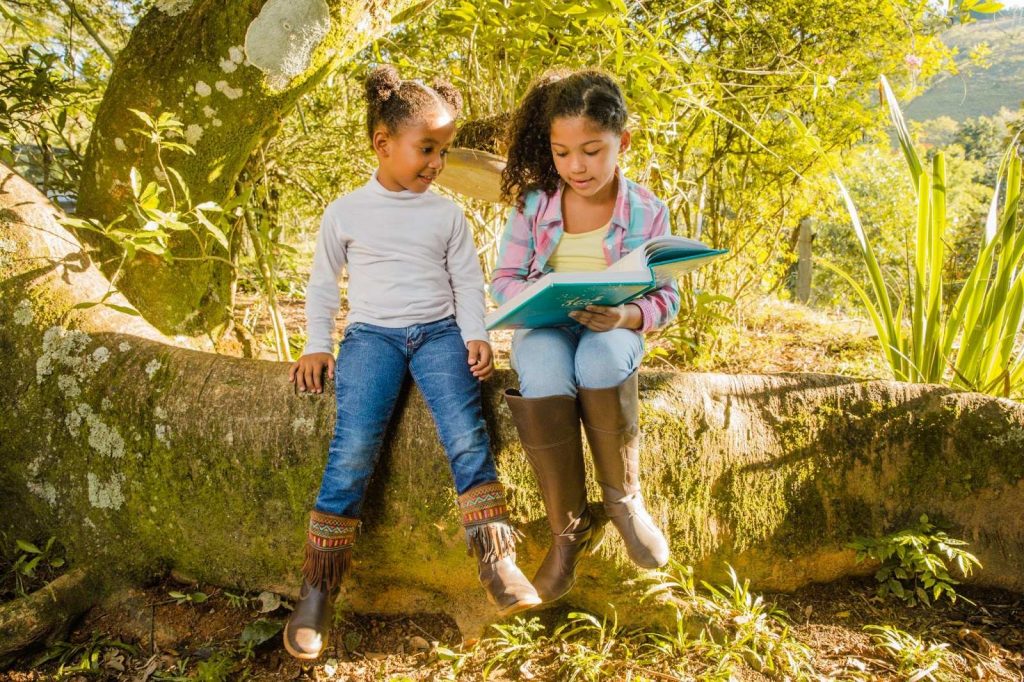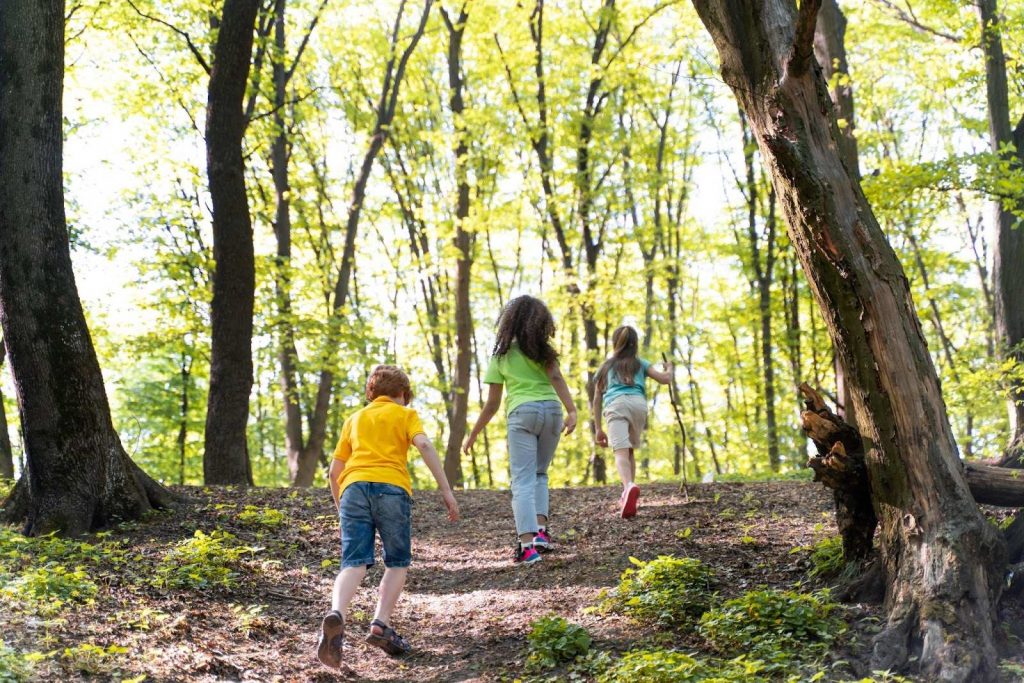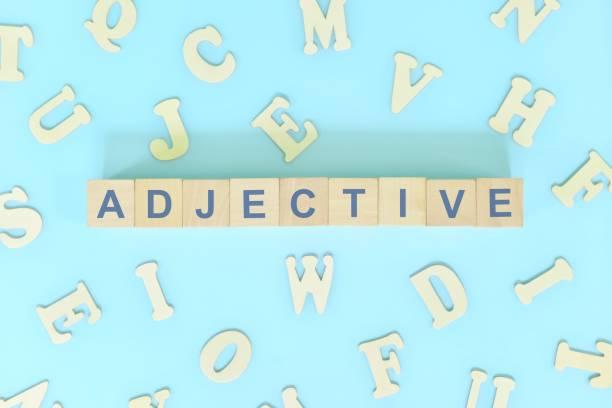Have you ever wondered how we use words to describe things? Well, there’s a special kind of word that does just that! They are called adjectives!
Math & ELA | PreK To Grade 5
Kids see fun.
You see real learning outcomes.
Watch your kids fall in love with math & reading through our scientifically designed curriculum.
Parents, try for free Teachers, use for free
Adjectives are like little helpers that tell us more about the stuff around us. They make sentences more interesting and fun. With adjectives, we can talk about big elephants, red apples, happy kids, and so much more. Imagine you have a cute puppy. The word “cute” is an adjective that tells us what kind of puppy it is. And when you bite into a juicy apple, the word “juicy” makes it sound even yummier. From the sunny sky to the tiny ant, adjectives help us see the world in a different way. They add colors, sizes, and feelings to our words, making our stories come alive!
Learning about adjectives is like finding a treasure of words that make talking and writing super cool. So let’s explore the exciting world of adjectives for kids. We will see how they work, play fun games, and discover amazing adjectives to make our words shine!
What Are Adjectives?
Adjectives are special words that make our sentences more interesting and colorful! They help us describe things better, so we can understand them easily. Imagine you have a big dog. The word “big” is an adjective because it tells us about the dog’s size. Adjectives give us more details, like saying “friendly dog” tells us about its nature too.
We use adjectives all the time, even without knowing it. When you say, “I want the blue crayon,” the word “blue” is an adjective telling us the color of the crayon.
Adjectives also help us compare things. Like saying, “My bicycle is faster than yours.” The word “faster” is an adjective comparing the speed of the bicycles.
They make our stories more interesting too. Instead of saying, “He went to the store,” we can say, “He happily went to the colorful store.” The words “happily” and “colorful” add feelings and details to the story.
“Adjectives are the sugar and spice of language. They add flavor and make everything nice.” – Dr. Seuss
Adjectives are like little helpers that bring life to our words. They let us share our thoughts and experiences in a way that others can understand and enjoy. So, keep an eye out for those magical adjectives next time you read or write something! They make everything more exciting!
Types of Adjectives
Adjectives come in different types. Each type of adjective helps us describe things in a unique way. Let’s explore some common types of adjectives:
1. Descriptive Adjectives
These adjectives paint a picture with words. They tell us about the color, size, shape, or appearance of something. For example, “red apple,” “big elephant,” “round ball,” and “pretty flower” are all descriptive adjectives.
2. Possessive Adjectives
These adjectives show ownership or possession. They tell us who owns or possesses something. Common possessive adjectives include “my,” “your,” “his,” “her,” “its,” “our,” and “their.” For instance, “my toy,” “his book,” and “their house” use possessive adjectives.
3. Demonstrative Adjectives
These adjectives point to or demonstrate which thing we are talking about. They include “this,” “that,” “these,” and “those.” For example, “this car,” “that dog,” “these cookies,” and “those birds” use demonstrative adjectives.
4. Numeral Adjectives
These adjectives tell us about the number or quantity of something. They can be either cardinal (one, two, three) or ordinal (first, second, third). For instance, “five apples,” “second place,” and “three books” use numeral adjectives.
5. Quantitative Adjectives
These adjectives give us information about the amount or quantity of a noun. They can be specific (e.g., “few,” “many”) or vague (e.g., “some,” “several”). For example, “many stars,” “few friends,” and “some candy” use quantitative adjectives.
6. Interrogative Adjectives
These adjectives are used to ask questions about nouns. They include “which,” “what,” “whose,” and “whose.” For instance, “which book,” “what color,” “whose pen,” and “whose house” use interrogative adjectives.
7. Emphasizing Adjectives
These adjectives add emphasis or extra feelings to a sentence. They include words like “amazing,” “absolutely,” “very,” “super,” and “incredible.” For example, “amazing view,” “very happy,” and “incredible performance” use emphasizing adjectives.
Remember, each type of adjective adds its own flavor to our sentences, making our language more delightful and enjoyable. So, the next time you describe something, try using different types of adjectives and see how they bring your words to life.
Related Reading: How To Make Simple Sentences For Kids (Activities & Examples)
Why Is It Important to Teach Adjectives to Kids?
Teaching kids about adjectives is like giving them a superpower in the world of words. Here’s why it’s so important:
“The difference between the right word and the almost right word is the difference between lightning and a lightning bug.” – Mark Twain
- Better Communication: Adjectives help kids express themselves better. They can describe things more clearly, making it easier for others to understand their thoughts and feelings.
- Creative Writing: Learning adjectives makes writing stories more fun! Kids can add colorful details to their characters, places, and adventures, making their stories come alive.
- Improved Vocabulary: Adjectives introduce kids to new words. The more adjectives they learn, the richer their vocabulary becomes, and the better they can communicate with others.
- Observation Skills: To use adjectives, kids need to observe and notice the world around them. It helps them pay attention to details, shapes, sizes, colors, and emotions.
- Confident Speaking: When kids know how to use adjectives, they feel more confident when talking in front of others. They can share exciting descriptions and engage their listeners.
- Appreciating Beauty: Adjectives help kids appreciate the beauty in everyday things. They can describe a stunning sunset, a delicious ice cream, or a lovely song.
- Boosting Imagination: By using adjectives, kids can imagine and dream up fantastic worlds, magical creatures, and exciting adventures.
- Building Connection: Sharing descriptive words fosters connections with others. When kids describe something they love, others might share similar feelings or interests.
- Reading Comprehension: Understanding adjectives helps kids comprehend what they read. Descriptions in books become more vivid, making reading even more enjoyable.
So, teaching kids about adjectives isn’t just about grammar; it’s about enhancing their creativity and building strong communication skills. It’s a powerful tool that will accompany them on their amazing journey through words.
Related Reading: Easy Steps to Teach Kids to Read
When Should Kids Learn About Adjectives?
Learning about adjectives can be super fun and helpful for kids, but you might be wondering, “When is the right time for them to start?” Well, the good news is that kids can start learning about adjectives at a young age! As soon as they begin to talk and express themselves, they can begin to explore adjectives too.
When kids start using adjectives, it opens up a whole new world of words for them. It helps them describe their toys, their favorite foods, and even their feelings. Imagine your little one saying, “I have a big, blue ball,” or “I feel happy!”
Early exposure to adjectives can boost your child’s language skills and creativity. It allows them to paint vivid pictures with words and share their thoughts in exciting ways.
You don’t need to have formal lessons on adjectives for kids. Instead, you can introduce adjectives during playtime or while reading together. Point out adjectives in books and ask them to find objects around the house that they can describe with adjectives.
As kids grow older, they can have even more fun with adjectives. They can use them in writing stories, creating poems, and even in everyday conversations. Learning about adjectives also helps kids become better readers because they can understand the details in the stories they read.
So, there’s no need to wait! Start introducing adjectives to your little ones early on, and watch their language skills bloom like a beautiful flower! It’s a magical journey of words that they will carry with them throughout their lives.
Related Reading: Best Reading Strategies for Students
10 Activities To Practice Adjectives For Kids
Learning about adjectives can be a lot of fun, especially when kids get to play exciting games and activities! If you’re wondering how to make learning adjectives enjoyable for your little ones, we’ve got you covered with these fun and engaging ways to practice adjectives for kids. These activities will not only help them understand adjectives better but also boost their language skills and creativity.
1. Adjective I-Spy

Play a classic game of I-Spy, but with a twist! Take turns describing objects using adjectives, and have others guess what you are describing. For example, “I spy with my little eye, something blue and shiny!”
2. Descriptive Drawings

Give kids a blank sheet of paper and a box of crayons. Ask them to draw their favorite animal, toy, or scene and use adjectives to describe it in their drawing. Encourage them to be as creative as possible!
Related Reading: Best Drawing Ideas for Kids They Will Love
3. Adjective Mad Libs

Mad Libs are a hilarious way to practice adjectives. Create a silly story with blanks for adjectives, nouns, and verbs. Have kids fill in the blanks with descriptive words to complete the story.
4. Adjective Pictionary

Draw and guess adjectives with this artistic game. Draw pictures representing adjectives, and have others guess the words. Can you draw a funny face or a tall tree?
5. Adjective Show and Tell
Organize a show and tell session where kids bring their favorite objects from home. Encourage them to describe their items using adjectives, and let the other kids guess what the object is.
6. Adjective Sorting Game

Prepare cards with various objects and their corresponding adjectives (e.g., red apple, big elephant, small flower). Have kids match the objects with the right adjectives.
7. Adjective Charades

Play a fun game of charades with adjectives! Act out an adjective, and see if others can guess it. Is it funny, silly, or bouncy?
Related Reading: Great Charades for Kids of All Ages
8. Adjective Memory Game

Make a set of cards with adjectives and their opposites (e.g., hot-cold, fast-slow, happy-sad). Play a memory game where kids have to find matching pairs.
9. Adjective Book Hunt

Read a book together and ask kids to find adjectives on each page. They can mark the adjectives with colorful stickers or underline them with crayons.
Related Reading: Best Scavenger Hunt Ideas for Kids Paired With Themes
10. Adjective Nature Walk

Take a nature walk and observe the world around you. Encourage kids to use adjectives to describe the trees, flowers, animals, and anything else they see during the walk.
By incorporating these popular activities into learning, kids can have a blast while developing their language skills and becoming confident in using adjectives. The key is to keep it fun, interactive, and engaging!
Related Reading: Amazing Grammar Games & Exercises for Kids
List of 30 Adjectives for Kids
Adjectives are like colorful paint brushes that add life and excitement to our sentences. They help us describe things in a way that makes our words come alive! Here’s a list of adjectives for children that they can use to make their language more interesting and fun:
- Big: Use “big” to describe large things like a big elephant or a big cake.
- Small: Describe tiny things with “small,” like a small butterfly or a small toy.
- Happy: Use “happy” to talk about joyful feelings, like feeling happy on your birthday.
- Sad: Describe feeling down or unhappy with “sad,” like when you miss your friends.
- Fast: Use “fast” to describe something speedy, like a fast car or a fast runner.
- Slow: Describe something that takes its time with “slow,” like a slow-moving turtle.
- Colorful: Use “colorful” to describe things with many bright colors, like a colorful rainbow.
- Shiny: Describe something that sparkles or reflects light with “shiny,” like a shiny diamond.
- Fuzzy: Use “fuzzy” to describe things that are soft and have tiny hairs, like a fuzzy teddy bear.
- Silly: Describe something funny or goofy with “silly,” like a silly joke that makes you laugh.
- Brave: Use “brave” to describe someone who is courageous and not afraid, like a brave superhero.
- Scary: Describe something that gives you chills with “scary,” like a scary ghost story.
- Tasty: Use “tasty” to describe delicious food that makes your taste buds dance.
- Sour: Describe something that makes your mouth pucker with “sour,” like a sour lemon.
- Loud: Use “loud” to describe sounds that are strong and can be heard from far away.
- Quiet: Describe something that makes little to no noise with “quiet,” like a quiet library.
- Fluffy: Use “fluffy” to describe soft and airy things, like a fluffy cloud.
- Smooth: Describe something that feels even and soft with “smooth,” like a smooth pebble.
- Bumpy: Use “bumpy” to describe something with uneven surfaces, like a bumpy road.
- Tall: Describe something that is high or has great height with “tall,” like a tall giraffe.
- Funny: Describe something that makes you laugh and brings joy with “funny,” like a funny clown or a funny joke.
- Gentle: Use “gentle” to describe something that is soft and delicate, like a gentle breeze or a gentle touch.
- Spooky: Describe something that is eerie and gives you a slight scare with “spooky,” like a spooky haunted house.
- Curious: Use “curious” to describe someone who is eager to learn and explore, like a curious little explorer.
- Fierce: Describe something that is strong and powerful with “fierce,” like a fierce lion or a fierce storm.
- Sweet: Use “sweet” to describe something that is kind and caring, like a sweet gesture from a friend.
- Sunny: Describe a bright and cheerful day with “sunny,” like a sunny day at the beach.
- Gigantic: Use “gigantic” to describe something that is extremely big, like a gigantic whale or a gigantic cake.
- Tiny: Describe something that is very small and cute with “tiny,” like a tiny ladybug or a tiny kitten.
- Clever: Use “clever” to describe someone who is smart and quick-witted, like a clever puzzle solver.
Use these adjectives for kids to make their language more exciting and descriptive. Have fun exploring the world of words.
Grade-Wise List of Adjectives For Kids
| Adjectives for 5th Graders: | Adjectives for 4th Graders: | Adjectives for 3rd Graders: | Adjectives for 2nd Graders: | Adjectives for 1st Graders: |
|---|---|---|---|---|
| Massive | Giant | Huge | Large | Big |
| Petite | Mini | Tiny | Little | Small |
| Elated | Delighted | Joyful | Glad | Happy |
| Gloomy | Unhappy | Down | Upset | Sad |
| Witty | Hilarious | Goofy | Silly | Funny |
| Rapid | Swift | Speedy | Quick | Fast |
| Radiant | Vivid | Vibrant | Bright | Colorful |
| Tranquil | Serene | Peaceful | Calm | Quiet |
Conclusion
You’ve discovered exciting activities and special ways to practice adjectives, making language learning fun for your little ones. When you encourage your kids to use adjectives in everyday talk, stories, and playtime, they will learn new words and express themselves creatively.
“Adjectives are like magic words that sprinkle enchantment over our language, turning the mundane into the marvelous.” – Roald Dahl
As you and your child go on this language adventure together, be proud of helping them learn more words and become better at talking. Let’s keep the magic of adjectives alive, creating colorful worlds with words, and making learning a delightful experience!
Frequently Asked Questions (FAQs)
What if my child has difficulty understanding adjectives?
If your child finds adjectives challenging, try using real-life examples, visuals, and playful activities to make learning more engaging.
Can practicing adjectives improve my child's writing skills?
Yes! Using adjectives helps children add details and imagery to their writing, making it more descriptive and engaging.
How can I incorporate adjectives into our daily routines?
Encourage your child to describe objects they encounter during daily activities, like meals, walks, or playtime.
























